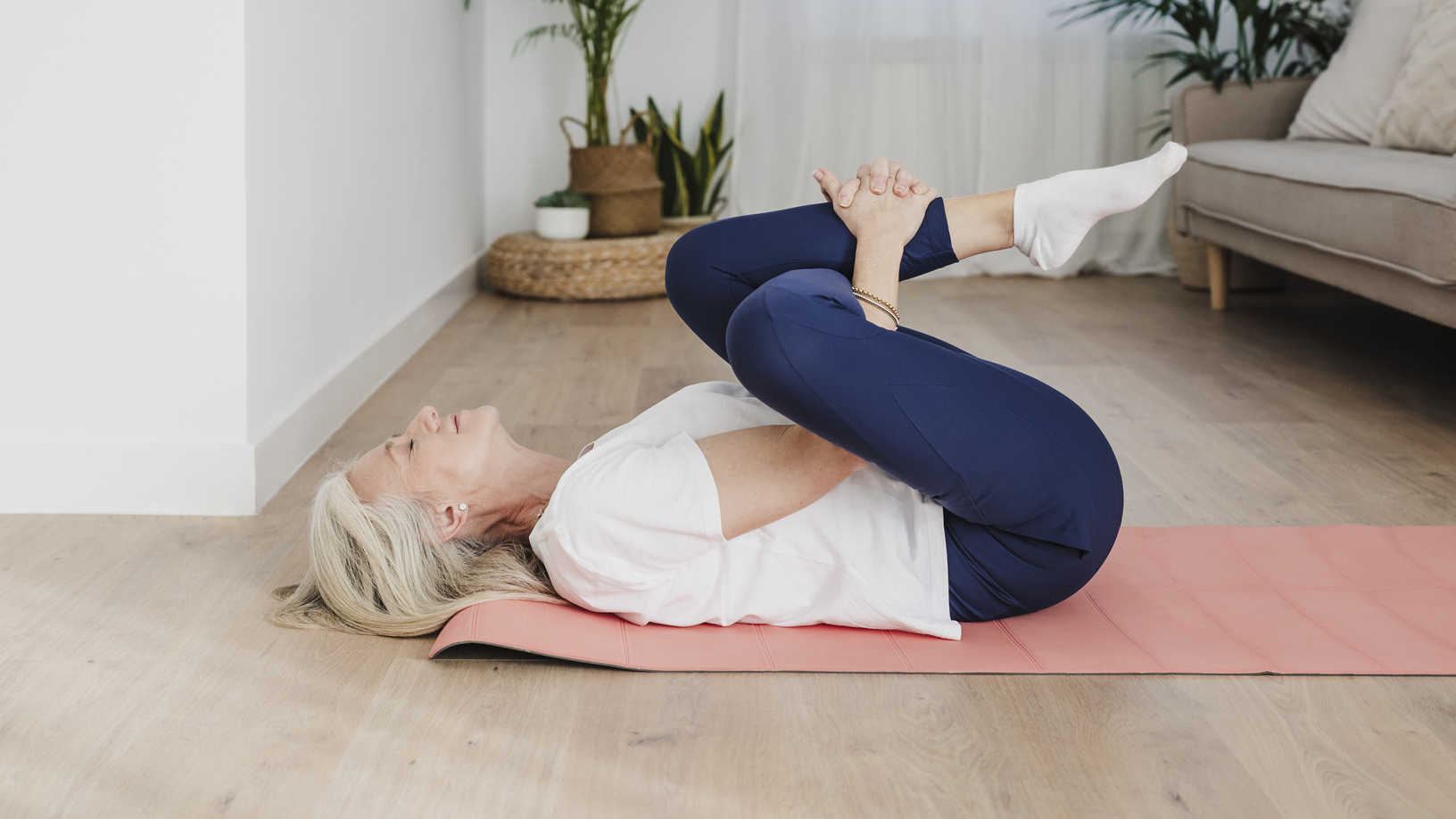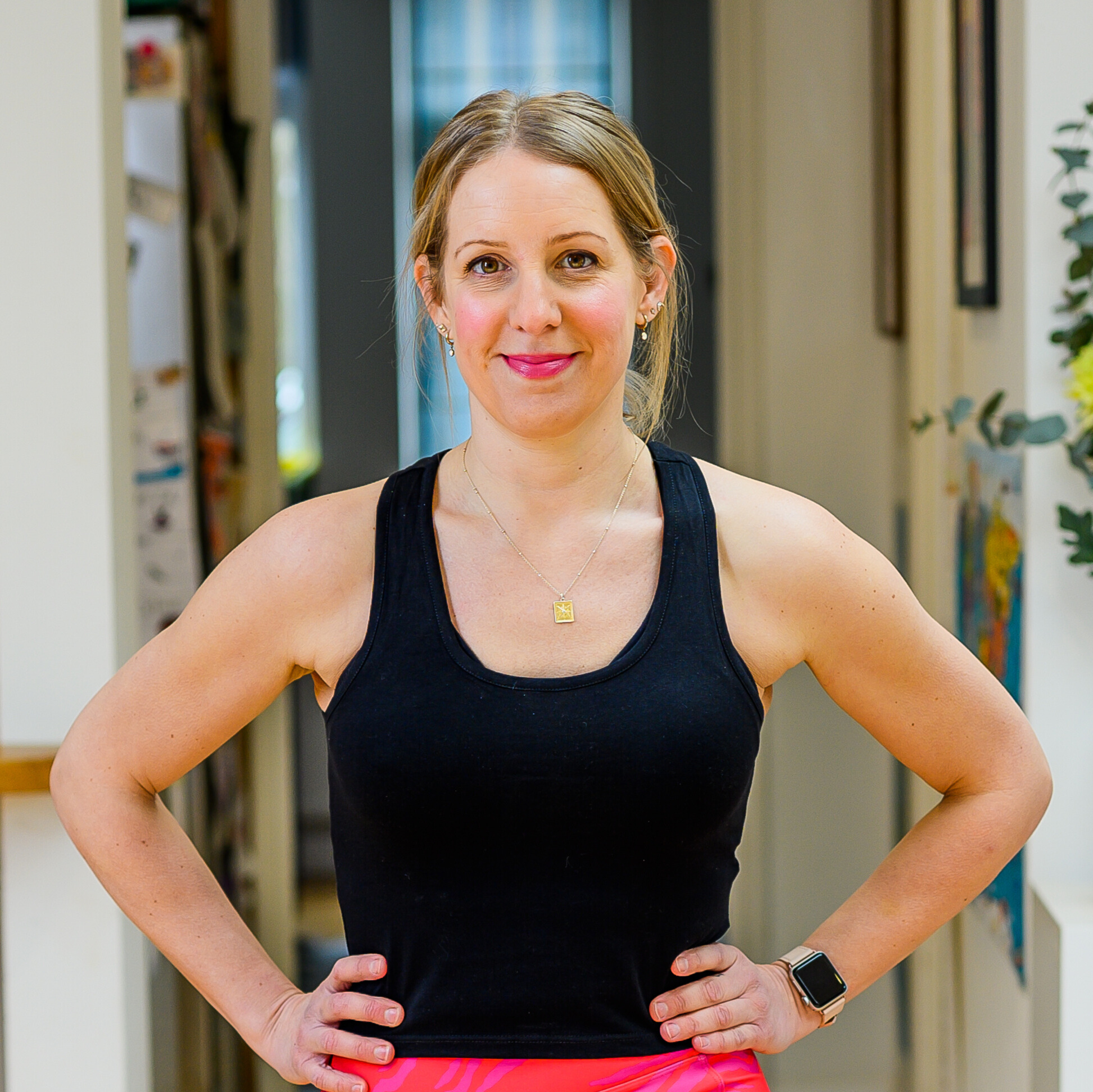Why menopause causes hip pain and five exercises to treat it
Suffer no more with these doctor and physical therapist-approved tips


As I navigate a quite frankly wild range of perimenopause symptoms, I’m realizing that many of the niggles I thought were muscle soreness could actually be down to hormonal changes.
I thought my recent hip pain might be down to my newfound love of Pilates, but when I spoke to menopause expert Dr Louise Newson, she explained it could be a symptom of perimenopause and menopause.
“Muscle and joint pains in general are very common symptoms during perimenopause and menopause,” says Newson, founder of the Balance menopause app and host of The Doctor Louise Newson Podcast.
“Our hormones, progesterone, estradiol and testosterone all work to reduce inflammation throughout our bodies, especially in our muscles and joints. So when levels of these important hormones are reduced, there is more inflammation in our muscles and joints leading to worsening pain.
“Some women can experience hip pain due to osteoarthritis, which is more common in menopausal women..
“There is also something called greater trochanteric pain syndrome (sometimes called trochanteric bursitis), which is a painful condition affecting the outer disc of the hip and thigh. This is often triggered by low hormone levels.”
Interestingly, how we experience pain can also be affected by hormonal changes.
Start your week with achievable workout ideas, health tips and wellbeing advice in your inbox.
“Another thing that can happen is that the hormones progesterone, estradiol and testosterone can affect our pain receptors. This basically means that when levels of these hormones are low, our perception of pain changes, and we can feel it more than usual.”
I spoke to Newson in more detail about these symptoms and what can help reduce them. We know exercise is essential so I also asked pelvic floor therapist Dr Amanda Neri to create a hip mobility workout, featured below.
How does perimenopause and menopause affect women and what can they do about it?
“The changes women experience during peri- and menopause are directly due to low hormone levels,” says Newson. “In my opinion, the best way to treat the symptoms is using HRT that is the same structure as natural hormones—called body-identical—rather than synthetic ones.
“These are progesterone and estradiol and are made from plant sources like soy. They are not associated with risks, which the synthetic hormones are, and they are available on the NHS—the UK’s publicly funded healthcare system.
“These hormones will reduce inflammation and change the way pain is perceived—in beneficial ways. Once these hormones are replaced, then women often have more energy and motivation, as well as less muscle and joint pains so then they can exercise more.”
Can diet and exercise improve menopause-related hip pain?
“Regular exercise can reduce inflammation in our bodies as well as improve blood flow and reduce pain,” says Newson. “Reducing or cutting out inflammatory, processed food can also be really beneficial at improving pain.”
That means cutting back on things like sugary foods, sodas, fried food, pastries, alcohol and refined carbohydrates.
“Movement can really help with menopause-related hip issues but it’s important not to push yourself in ways that increase or worsen pain,” says Newson.
“Many women find that they need to stretch more before exercising or change the type of exercise they do. Some women prefer Pilates or yoga rather than high-intensity classes. Everyone is different though so it is important to find an exercise that you enjoy and can do regularly,” she says.
If your peri- or menopause symptoms are affecting your ability to exercise, Newson recommends seeking advice from a healthcare professional who understands hormones, especially testosterone.
“Research has shown that 73% of women who were prescribed testosterone found that it helped them to increase their physical activity. Testosterone can also work to improve mood, motivation, energy and stamina.”
Five movements to help manage stiff hips
For movement to help manage menopausal hip pain, pelvic floor therapist Dr Amanda Neri has created this routine.
You will need a mini or loop resistance band (like this set on Amazon) for this sequence. Neri recommends doing this routine three to five times a week for best results.
A post shared by Fit&Well (@wearefitandwell)
A photo posted by on
1. Hip controlled articular rotation
Sets: 1 Reps: 6 each direction, each side
“This helps maintain hip mobility and works on the deeper hip rotators and hip joint capsule, which surrounds the joint and connects the pelvis to the femur, providing support and stability,” says Neri.
- Start on your hands and knees, with your shoulders over your wrists and your knees under your hips.
- Keeping a 90° bend in your knee and moving from your right hip throughout, bring your right knee toward your chest, then out to the side as close to hip height as your mobility allows, then behind you, and finally back to the start, with your right knee under you right hip.
- Reverse the movement, raising your right knee behind you, out to the side, to your chest and then to the start.
- Complete all your reps on one side, then switch sides.
Form tips: Keep your foot flexed as you rotate, for maximum engagement and deeper range of motion.
2. Figure-4 stretch
Sets: 2 Time: 30-60sec each side
“This stretch helps relax glute muscles that may be sore or tight,” says Neri.
- Lie on your back with your knees bent and feet on the floor.
- Place your right ankle on your left thigh, just above your left knee.
- Take hold of the back of your left thigh in both hands and gently pull your left leg to your chest—you should feel a stretch in your right buttock.
- Hold for time, then repeat on the other side.
3. Pelvic tilt glute bridge
Sets: 2 Reps: 10
“The posterior pelvic tilt helps with pelvic and lower back mobility, while the bridge helps isolate and strengthen glutes and hamstrings,” says Neri.
- Lie on your back with your knees bent and both feet flat on the floor.
- Rotate your hips back into a pelvic tilt by pushing your back into the floor.
- Squeeze your glutes as you slowly lift your hips.
- Hold for 1-2 seconds then return to the starting position slowly.
Form tips: “For the pelvic tilt, think about tucking your tail between your legs,” says Neri. “Squeeze the glutes and lift the hips off the floor, making sure to not flare the rib cage out. Exhale as you lift.”
4. Side-lying leg raise
Sets: 2 Reps: 10 each side
“I recommend this to clients as it strengthens outer glutes that help stabilize us when walking, exercising and balancing,” says Neri.
- Lie on your side with your legs extended, resting your head on your arm.
- Bend your lower leg, keeping the leg on top straight.
- Slowly raise your upper leg just past hip height, squeezing your glutes.
- Keep your toes pointing down.
- Slowly lower to the start.
Form tips: Keeping your foot flexed (toes pointing down) activates the leg muscles for better results.
5. Standing clamshell
Sets: 2 Reps: 8 each side
“This really helps strengthen and stabilize hips because it's done while standing,” says Neri.
- Stand facing away from a wall with your feet hip-width apart with a loop band around your thighs, just above your knees, and your hands on your hips.
- Shift your weight onto your right leg, and bend your left knee to lift your left foot behind you, placing the sole of your foot on the wall at knee height. Your knees should be together. Hold onto a chair or stable surface for support if needed.
- Keeping your left foot on the wall, raise your left knee out to the left side, working against the resistance of the band.
- Pause, then reverse the movement to bring your knees together.
- Complete all the reps on one side, then switch sides.
Maddy Biddulph is a journalist specializing in fitness, health and wellbeing content, with 26 years in consumer media working as a writer and editor for some of the bestselling newspapers, magazines and websites in the US and UK, including Marie Claire, The Sunday Times and Women’s Health UK.
She is a CIMPSA-certified PT and works one-on-one with clients, as well as running Circuits Club classes which mixes cardio and strength training and chair-based exercise classes for seniors.
You must confirm your public display name before commenting
Please logout and then login again, you will then be prompted to enter your display name.
